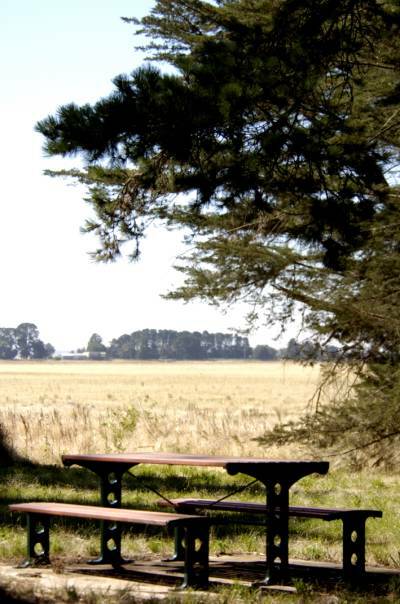
LOOKING out over the fairy grass-covered expanse of Lake Learmonth it's hard to imagine it ever held water.Or that in past summers it was a hive of activity where thousands of people would gather to sail, ski, swim or camp on its shores.The banks are now deserted.Under some towering pines there are new iron and jarrah picnic benches and tables.They look incongruous - seats installed beside an attraction that no longer exists.Nearby, car loads of women are arriving for a mid-week bowls competition.Val Duggan and Wilma Jenkins are among them and recall a vastly different Lake Learmonth."We are from the Burumbeet Ski Club and Learmonth was like our sister club," Mrs Duggan said."Lake Learmonth was beautiful," Mrs Jenkins said."You had your yachts, speedboats. The place was jumping. It was a wonderful, friendly town. Totally united. The caravan park was wonderful."Lake Burrumbeet is as dry as Lake Learmonth but the Burrumbeet Ski and Boat Club is still going.Regular events like barbecues and car trials help keep members together."We're inaugural members," Mrs Jenkins said.In the mid-1970s the club got dollar-for-dollar funding to build a boat ramp and later a clubhouse.A high point came in 1982 when the club hosted the national water skiing titles."The boat club catered for it and raised enough money to extend the clubhouse," Mrs Jenkins said.Now they are just trying to keep the club alive."We will never ski out there again but our grandkids might, that's what we are hanging in there for," Mrs Jenkins said."Mother Nature's forgotten us, I think," Mrs Duggan said.Victoria's Western District is covered with hundreds of lakes. At least on paper.But a tour of the region shows many of the blue marks on maps are little more than a mirage.At the Skipton Hotel an enormous eel has been stuffed and mounted on a wall.It was hauled out of Lake Burrumbeet in August, 2000, weighing more than 8kg.The lake would yield little more than broken beer bottles now.North of Skipton is another former lake, Lake Goldsmith. A sign still proclaims the depression the Lake Goldsmith Wildlife Reserve but there is not a drop of water and no obvious wildlife.Slater Lake, south of Lake Goldsmith, is also bone dry.Further west, Chinaman's Swamp, on the northern side of the Hamilton Hwy, looks more like a saltpan but Lake Bolac looks promising at a distance.On the east side of the lake are sandy beaches and at first there is a smell redolent of the ocean - there is even the glint of salt crystals.The birds don't mind though and while no-one can get a boat out on to the lake some locals, like Edith Atkinson, remain optimistic.Mrs Atkinson has lived in Lake Bolac for 50 years and works at the town's visitor information centre. She's never seen the lake so low but is confident it will return to its former glory."It used to be clear water in the 1960s," she said."You could dive in and see right down to the bottom."We had all sorts of speed boats and yachts and people would be skiing and fishing."We used to have 10,000 campers, now we have 500 to 600. They don't come for the lake any more, they come for the silence and the ambience.""But people are optimistic because in 1843 it dried up in the same way."Lake Bolac is fed by the Fiery Creek, which has its origins north of Beaufort in the Mt Cole State Park.When the lake is full it overflows to Salt Creek, to the south. It is an important link because eels migrate to the ocean for breeding and Salt Creek is connected to the Hopkins River.An Environment Protection Authority report released last year concluded that drought had contributed to thousands of eel deaths in western Victorian lakes.An EPA spokeswoman said this week Lake Bolac was less than a metre deep and had a salt concentration half that of seawater.While lakes that are home to eels may not have dried up completely the water quality has dropped enough to result in thousands dying in recent years.South of Lismore, Lake Tooliorook still has water but it's nowhere near the boat ramp or fishing pier which are closed to the public.There might not be any people about but it's covered with black swans and ducks.The disappearing lakes reflect the prolonged drought.CSIRO researcher Roger Jones reported in 2001 that many of the lakes were like giant rain gauges, showing fluctuating rainfall over long periods of time.And he concluded those lakes had been slowly drying up since the late 1800s.
Subscribe now for unlimited access.
$0/
(min cost $0)
or signup to continue reading

